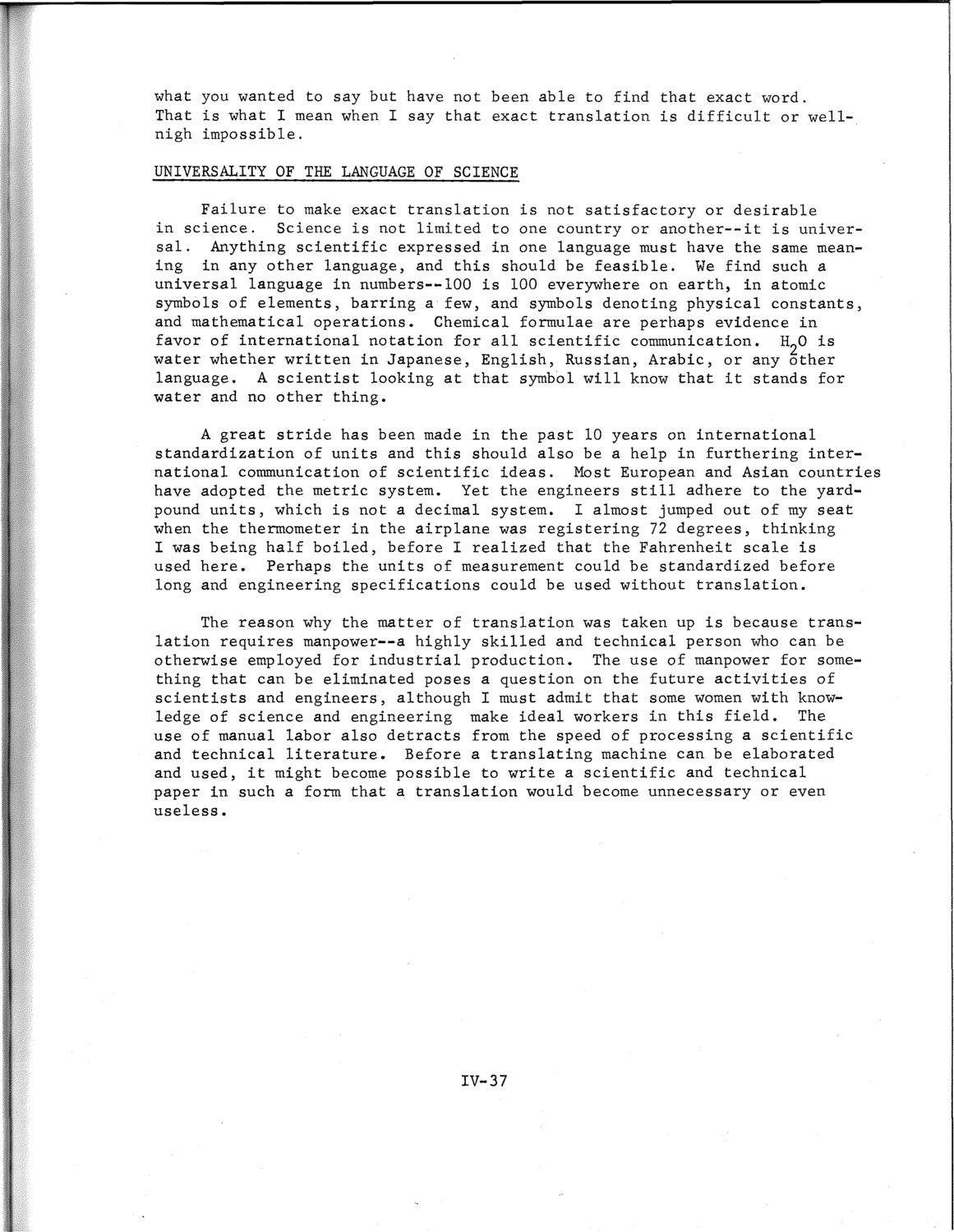| |
| |
Caption: SWE - Proceedings of the First International Conference of Women Engineers and Scientists
This is a reduced-resolution page image for fast online browsing.

EXTRACTED TEXT FROM PAGE:
what you wanted to say but have not been able to find that exact word. That is what I mean when I say that exact translation is difficult or wellnigh impossible. UNIVERSALITY OF THE LANGUAGE OF SCIENCE Failure to make exact translation is not satisfactory or desirable in science. Science is not limited to one country or another—it is universal. Anything scientific expressed in one language must have the same meaning in any other language, and this should be feasible. We find such a universal language in numbers—100 is 100 everywhere on earth, in atomic symbols of elements, barring a few, and symbols denoting physical constants, and mathematical operations. Chemical formulae are perhaps evidence in favor of international notation for all scientific communication. H„0 is water whether written in Japanese, English, Russian, Arabic, or any other language. A scientist looking at that symbol will know that it stands for water and no other thing. A great stride has been made in the past 10 years on international standardization of units and this should also be a help in furthering international communication of scientific ideas. Most European and Asian countries have adopted the metric system. Yet the engineers still adhere to the yardpound units, which is not a decimal system. I almost jumped out of my seat when the thermometer in the airplane was registering 72 degrees, thinking I was being half boiled, before I realized that the Fahrenheit scale is used here. Perhaps the units of measurement could be standardized before long and engineering specifications could be used without translation. The reason why the matter of translation was taken up is because translation requires manpower—a highly skilled and technical person who can be otherwise employed for industrial production. The use of manpower for something that can be eliminated poses a question on the future activities of scientists and engineers, although I must admit that some women with knowledge of science and engineering make ideal workers in this field. The use of manual labor also detracts from the speed of processing a scientific and technical literature. Before a translating machine can be elaborated and used, it might become possible to write a scientific and technical paper in such a form that a translation would become unnecessary or even useless. IV-3 7
| |